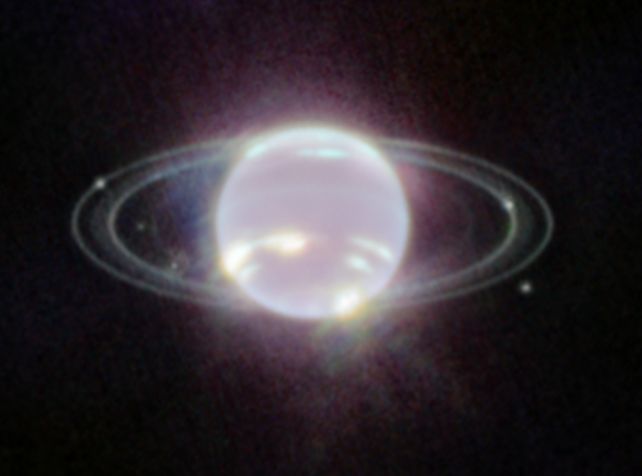Webb Telescope Captures Images of 4 Giant Planets

The James Webb Space Telescope has photographed Uranus, Neptune, Saturn, and Jupiter.
This news comes from Science Alert.
Saturn
 Photo: Saturn. Source: NASA
Photo: Saturn. Source: NASA
The disc of Saturn appears quite dark in the new image, lacking the characteristic cloud bands and appearing relatively indistinct with a dull brown color.
This is due to the wavelengths at which the telescope observes the universe – in the near and mid-infrared range (typically invisible to the human eye).
Under the guidance of planetary scientist Leigh Fletcher from the University of Leicester in the United Kingdom, the team hopes to discover new ring structures on Saturn. Scientists also anticipate identifying young satellites orbiting the gas giant.
The images reveal a dark polar region. Scientists suspect an unknown aerosol process as the cause.
The atmosphere surrounding Saturn's disc is rather bright, which could be the result of methane fluorescence or hydrogen emission.
Jupiter
 Photo: Jupiter. Source: NASA
Photo: Jupiter. Source: NASA
The images of Jupiter were captured back in August of last year. In processing, they look stunning.
Scientists observed the shimmering polar auroras on this gas giant, which are not visible in optical wavelengths.
Thanks to these images, astronomers also discovered lesser-known satellites of Jupiter, Amalthea and Adrastea.
"This single image encapsulates the science of our Jupiter system program, which studies the dynamics and chemistry of Jupiter itself, its rings, and its satellite system," said astronomer and lead researcher Thierry Fouchet from the Paris Observatory in France.
Neptune
 Photo: Neptune. Source: NASA
Photo: Neptune. Source: NASA
Investigations of Neptune began in September 2022. This planet received less attention before due to its significant distance in the Solar System.
However, the images from the James Webb Space Telescope reveal incredible details of this icy giant for the first time in the infrared range.
The images also show a bright band encircling the planet's equator. Scientists believe it may be a sign of Neptune's global atmospheric circulation.
Uranus
 Photo: Uranus. Source: NASA
Photo: Uranus. Source: NASA
Observations of Uranus in April 2023 do not provide answers to scientists' questions about why Uranus is tilted.
Using the telescope's images, researchers were able to identify 11 out of the 13 incredible ring structures of Uranus and observed unusual atmospheric illumination above the planet's polar cap. Therefore, scientists have more questions than answers regarding Uranus.